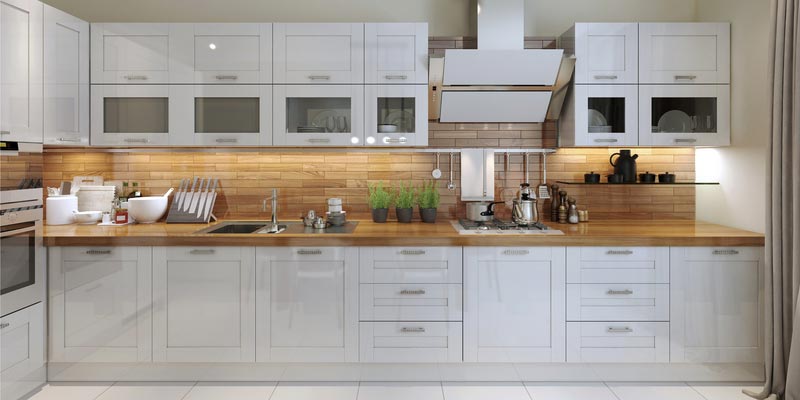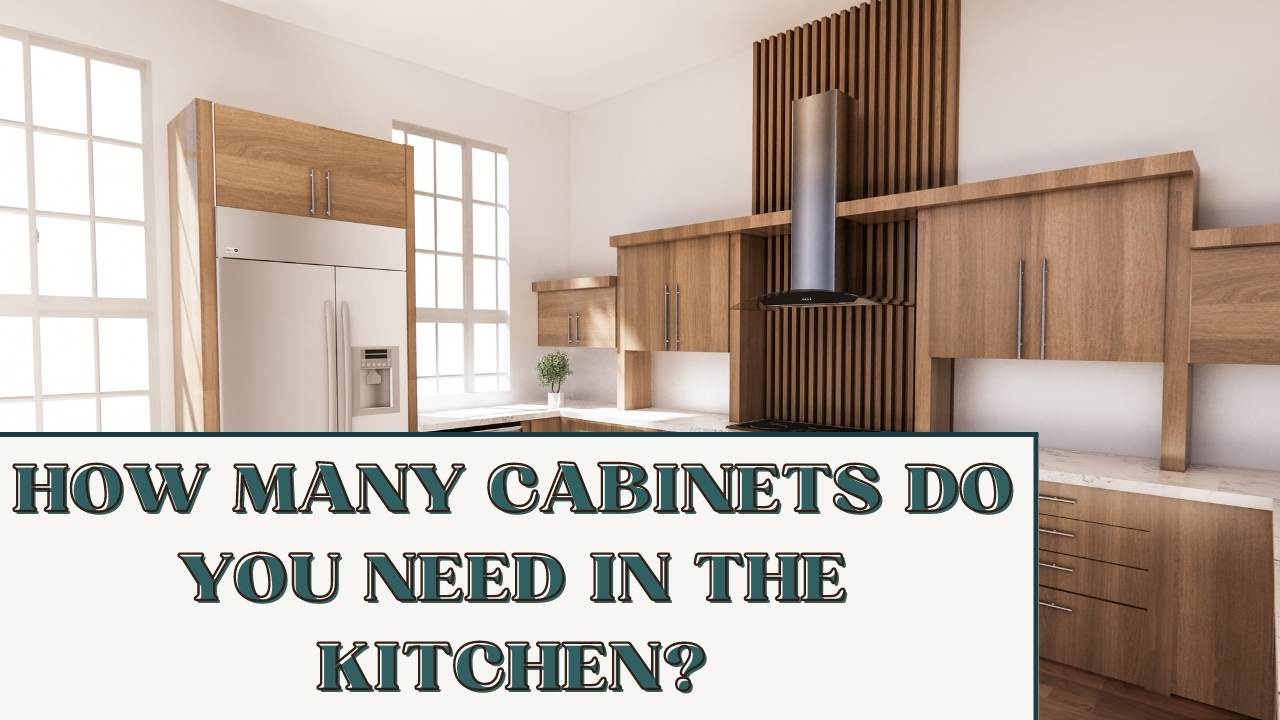Melvin is an expert for portable products.The site is for sharing everything about portable products for online buyers.
In a kitchen, it depends on the size and layout, but typically you need at least 10 cabinets. A well-designed kitchen should have enough cabinets to provide adequate storage for dishes, cookware, and pantry items, while also allowing for efficient workflow and organization.
However, the number of cabinets needed may vary based on individual needs and preferences. Proper planning and consideration of storage requirements can help determine the appropriate number of cabinets for your kitchen. Ultimately, the goal is to maximize storage space and create a functional and aesthetically pleasing kitchen design.
By optimizing cabinet quantity and placement, you can achieve an efficient and well-organized kitchen space.
Considerations For Determining The Number Of Cabinets
Size and layout of the kitchen: The size and layout of your kitchen will play a crucial role in determining the number of cabinets you need. A larger kitchen with more open space may require more cabinets to effectively utilize the available area. On the other hand, a smaller kitchen may have space constraints, suggesting the need for fewer cabinets but utilizing them efficiently. Before making any decisions, take accurate measurements of your kitchen and consider the placement of windows, doors, and other fixed structures.
Storage needs and usage habits: Your storage needs and usage habits are significant factors that should be considered. Assess the items you typically store in your kitchen, such as cookware, utensils, appliances, and pantry items. Determine the amount of storage space each category requires to ensure there is enough room for everything. Additionally, take into account your usage habits, such as whether you entertain frequently or cook elaborate meals regularly, as these factors may impact the storage requirements.
Appliance dimensions and placement: Consider the dimensions and placement of your appliances while determining the number of cabinets. Appliances like refrigerators, dishwashers, and ovens will require their own dedicated space, which may affect the overall cabinet count. Ensure that there is enough space to accommodate your appliances without overcrowding the kitchen. This will help in maintaining a functional and visually appealing kitchen layout.
Optimal Cabinet Configuration For Different Kitchen Sizes
htmlIn small kitchens, maximizing vertical space is crucial to make the most of the limited area. Installing tall cabinets that reach the ceiling can provide additional storage space. Additionally, utilizing corner cabinets efficiently can help optimize storage. Consider using solutions such as rotating shelves, pull-out drawers, or lazy susans to maximize accessibility and functionality in corners. These space-saving options can greatly improve the storage capacity of a small kitchen.
When it comes to medium-sized kitchens, finding a balance between storage and workspace is important. Opt for a cabinet configuration that provides enough storage for your needs while leaving enough space for food preparation. Consider incorporating cabinets with deeper shelves or pull-out drawers for storing larger pots, pans, and appliances. To incorporate functional cabinet accessories, you can add organizers for spices, utensils, or cutting boards, making your kitchen more efficient and organized.
Large kitchens offer an opportunity to create designated storage zones. Creating designated storage zones allows you to store items based on their functionality and frequency of use. For example, you can dedicate cabinets for cookware, bakeware, or small appliances. Furthermore, in large kitchens, you can incorporate specialized cabinets to address specific needs, such as a wine rack, a pantry cabinet with pull-out shelves, or a tall broom closet. These specialized cabinets make it easier to keep your kitchen organized and ensure everything has its place.
Calculating The Number Of Cabinets Required
Calculating the number of cabinets required for a kitchen involves considering various factors. One important aspect is counting the base cabinets. These cabinets are typically positioned at the bottom and provide essential storage for items like pots, pans, and cooking utensils. The number of base cabinets needed depends on the size of the kitchen and the amount of storage space required. It’s important to determine the dimensions of each base cabinet and allocate sufficient space for them.
Another factor to consider is determining the quantity of upper cabinets. These cabinets are mounted on the wall and provide additional storage space for items that are not frequently used. The number of upper cabinets required depends on the size of the kitchen and the desired storage capacity. It’s crucial to measure the available wall space and select the appropriate size and quantity of upper cabinets.
In addition to base and upper cabinets, it’s also important to consider specialized cabinet types. These include cabinets designed for specific purposes such as corner cabinets, pantry cabinets, and appliance garages. The need for specialized cabinets depends on the layout and functionality desired for the kitchen.
Additional Factors To Consider
When planning a kitchen renovation or remodel, one of the key considerations is determining how many cabinets are needed. While it ultimately depends on individual preferences and the size of the kitchen, there are additional factors to consider to ensure sufficient storage space for pantry items and other kitchen essentials.
Pantry cabinets and storage solutions can play a significant role in maximizing available space. Consider incorporating tall pantry cabinets to store bulkier items and make it easier to access frequently used ingredients. Additionally, explore storage alternatives for limited cabinet space, such as utilizing vertical storage with hooks or installing open shelving to display items.
Assessing the need for additional cabinets in the future is crucial to avoid potential storage issues later on. Think about potential changes in lifestyle or family size that may require more storage space. It’s advisable to allocate space for future cabinets during the initial kitchen design phase to ensure a smooth transition.
By taking these factors into account, you can determine the ideal number of cabinets for your kitchen that maximizes storage efficiency and meets your specific needs.
Budgeting And Costs
Estimating the cost of cabinets can help you budget effectively for your kitchen renovation project. Quality and price are important factors to consider when choosing cabinets. Custom cabinets offer a high-end look and can be tailored to your specific needs, but they come with a higher price tag. If you are on a budget, there are budget-friendly alternatives available. Stock cabinets are pre-made and come in standard sizes, making them more affordable. Semi-custom cabinets offer more flexibility than stock cabinets, allowing you to choose from a range of styles and finishes. RTA (Ready-to-Assemble) cabinets are another budget-friendly option, as they are packaged flat and require assembly. Considering your budget and needs, you can find cabinets that strike the right balance between quality and price.

Credit: topscabinet.net
Frequently Asked Questions For How Many Cabinets Do You Need In A Kitchen
How Many Cabinets Do I Need In My Kitchen?
In general, it is recommended to have at least 12-15 cabinets in a standard-sized kitchen. However, the number of cabinets you need will depend on your storage requirements and kitchen layout.
What Factors Should I Consider When Deciding On The Number Of Cabinets?
When determining the number of cabinets for your kitchen, consider factors like your cooking and entertaining habits, the number of kitchen appliances and gadgets you own, and the amount of pantry items and dishware you need to store.
How Can I Optimize The Storage Space In My Kitchen?
To maximize storage space in your kitchen, consider incorporating tall pantry cabinets, utilizing the space above cabinets for storing less frequently used items, and installing organizer systems within the cabinets for efficient organization.
Should I Prioritize Functionality Or Aesthetics When Choosing Cabinets?
Ideally, you should strike a balance between functionality and aesthetics when selecting kitchen cabinets. Consider your storage needs and preferences for cabinet design, ensuring they complement the overall look and feel of your kitchen.
Conclusion
To determine the number of cabinets needed in a kitchen, consider your storage requirements and available space. Take into account the size and layout of your kitchen, as well as your cooking and entertaining habits. By maximizing the use of vertical and horizontal spaces, you can optimize storage capacity and keep your kitchen organized.
Remember to also consider functionality, style, and budget when making your cabinet choices. With careful planning, you can create a kitchen that is both practical and visually appealing.

Melvin is an expert for portable products.The site is for sharing everything about portable products for online buyers.

